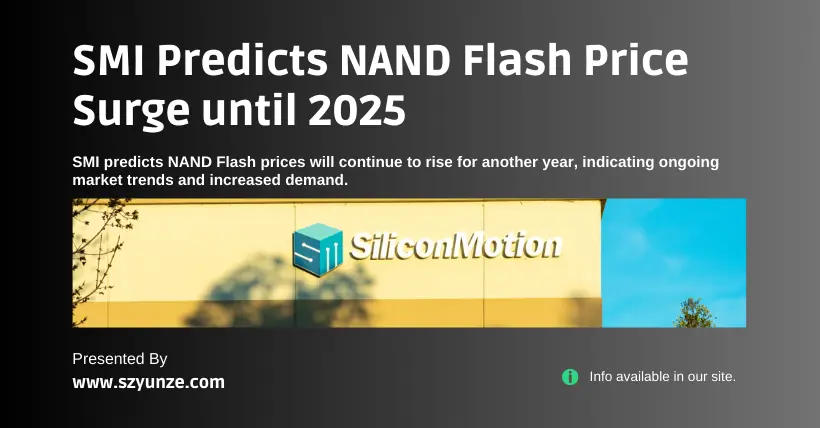Regarding the demand for NAND flash, SMI’s CEO, Wallace C. Kou, stated that data center applications on the enterprise side are performing strongly, while the consumer sector is recovering slowly. Apart from slight growth in the mobile application market, other market conditions have not shown clear signs of recovery, and channel demand remains weak.
In contrast, NAND flash manufacturers are cautious about expanding production, aiming to control prices through volume. Due to the continued effects of production cuts, prices are not expected to reverse and drop this year. To compensate for losses in 2023, manufacturers aim to increase profit margins to 40%, with price increases likely to continue until the first half of 2025. Additionally, it takes six months to see the results of capacity increases, so overall supply capacity will rise in the second half of 2025.
Regarding AI development, Wallace C. Kou compared it to the defense industry, where inferior equipment is not considered, and budgets are not deemed excessive. Similarly, in AI development, companies pursue the best technology. Even if excessive computing power is unnecessary, not using Nvidia’s AI chips would result in a loss of competitiveness.
Currently, Blackwell architecture GPUs have not yet shipped, but the next-generation Rubin architecture is already in preparation. This makes it difficult for competitors to catch up and forces customers to continue purchasing due to market demands.
Therefore, Nvidia’s dominant position in the AI market is expected to remain unchallenged for the next five years, driving demand for related products.
Samsung is lagging behind SK Hynix in the HBM market. Wallace C. Kou noted that despite Samsung’s lag, it remains a significant player in storage technology. With Nvidia’s development in the data center market, Samsung’s large production capacity is needed to meet the market’s high demand. It is expected that Samsung might catch up with its competitors by the end of 2024.
In terms of end devices, the introduction of small and medium-sized AI models will lead to key software applications emerging in the future. Wallace C. Kou is particularly optimistic about the development of Chinese AI smartphones, emphasizing that their generative AI phones are building their cloud ecosystem and are also moving into the car networking system, making the smartphone a crucial carrier. More emerging applications are expected from the second half of 2024 to 2025.

AI requires massive data storage for processes like training and understanding. Wallace C. Kou pointed out that in 2023, SMI primarily focused on 1TB products for enterprise use. Starting from March 2024, mainstream demand has shifted to 32-64TB, a significant jump mainly due to the large amount of data processing required during AI training. For example, the AI model Sora can generate a 60-second video based on a single text command, with extremely high computation density.
There is also a significant increase in demand for QLC NAND. Samsung, Micron, and Western Digital believe that QLC storage is more suitable for AI data storage. Although its transfer speed is similar to TLC, it can store more bits.
Wallace C. Kou also stated that SMI, in the AI era, will collaborate with NAND manufacturers, module vendors, cloud service providers, and server manufacturers to become a driving force in AI.
Related:

Disclaimer: This article is created by the original author. The content of the article represents their personal opinions. Our reposting is for sharing and discussion purposes only and does not imply our endorsement or agreement. If you have any objections, please contact us through the provided channels.



